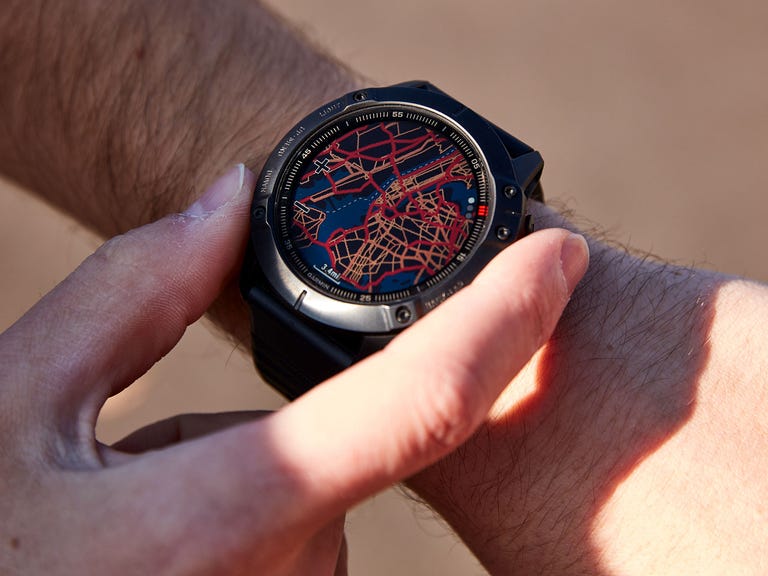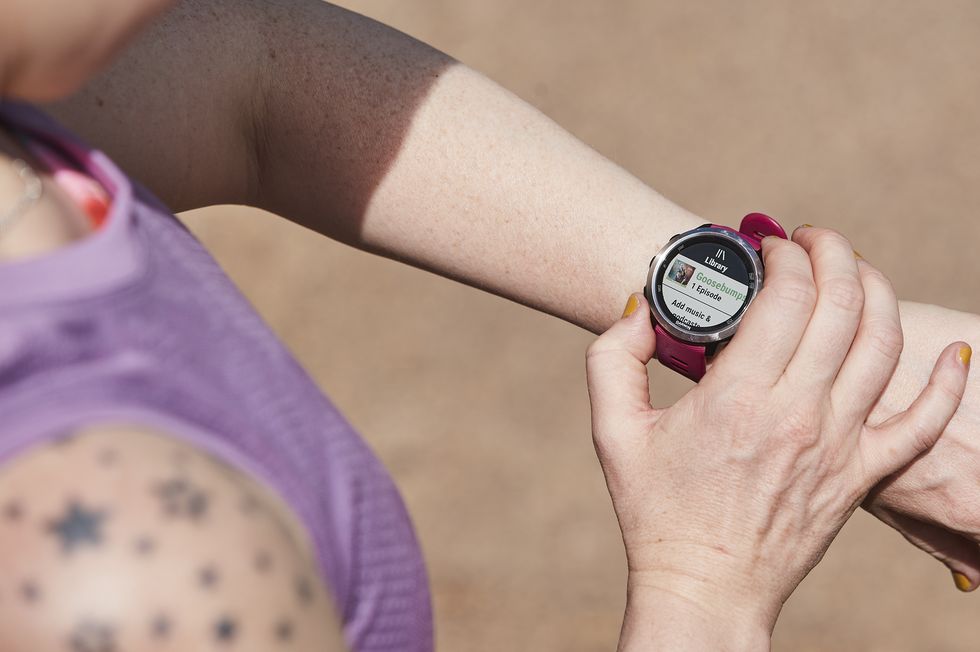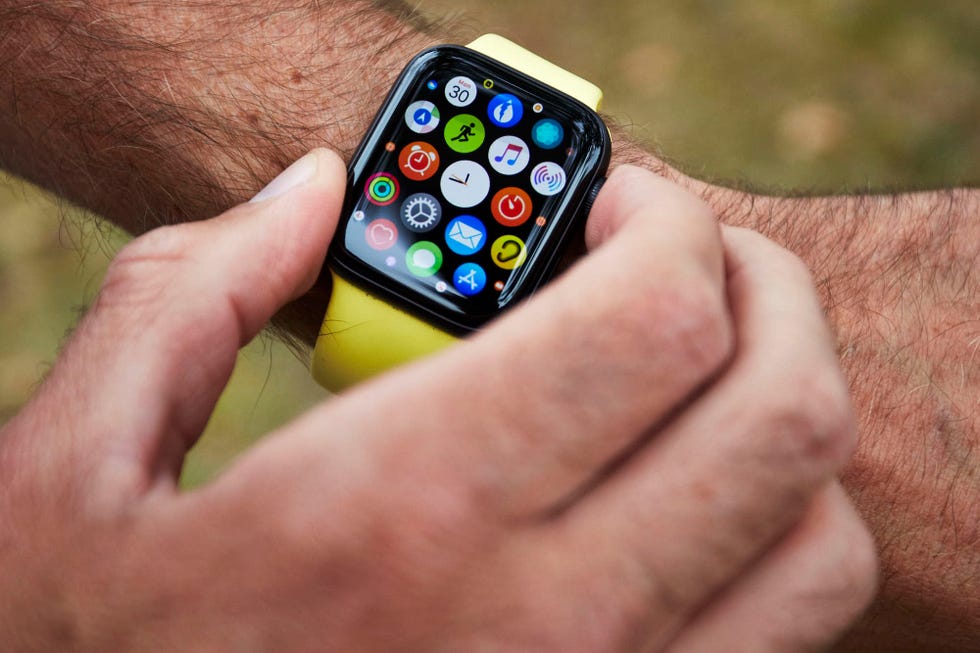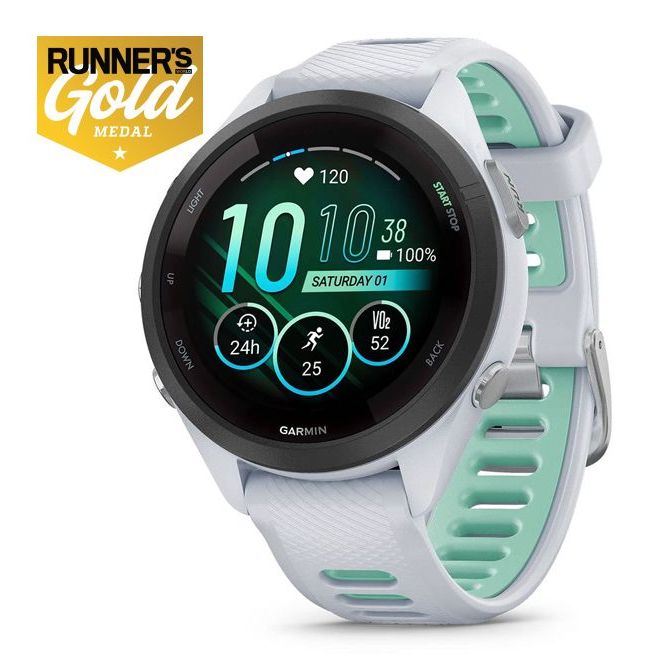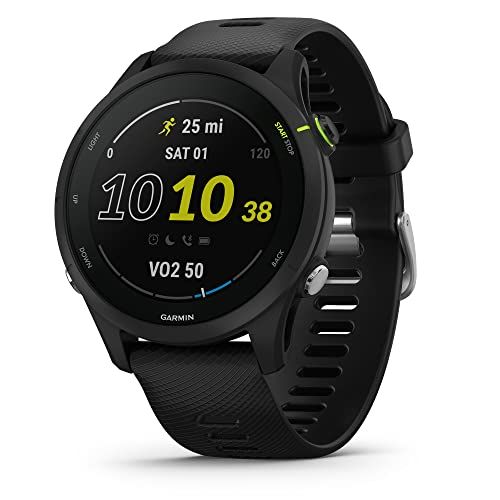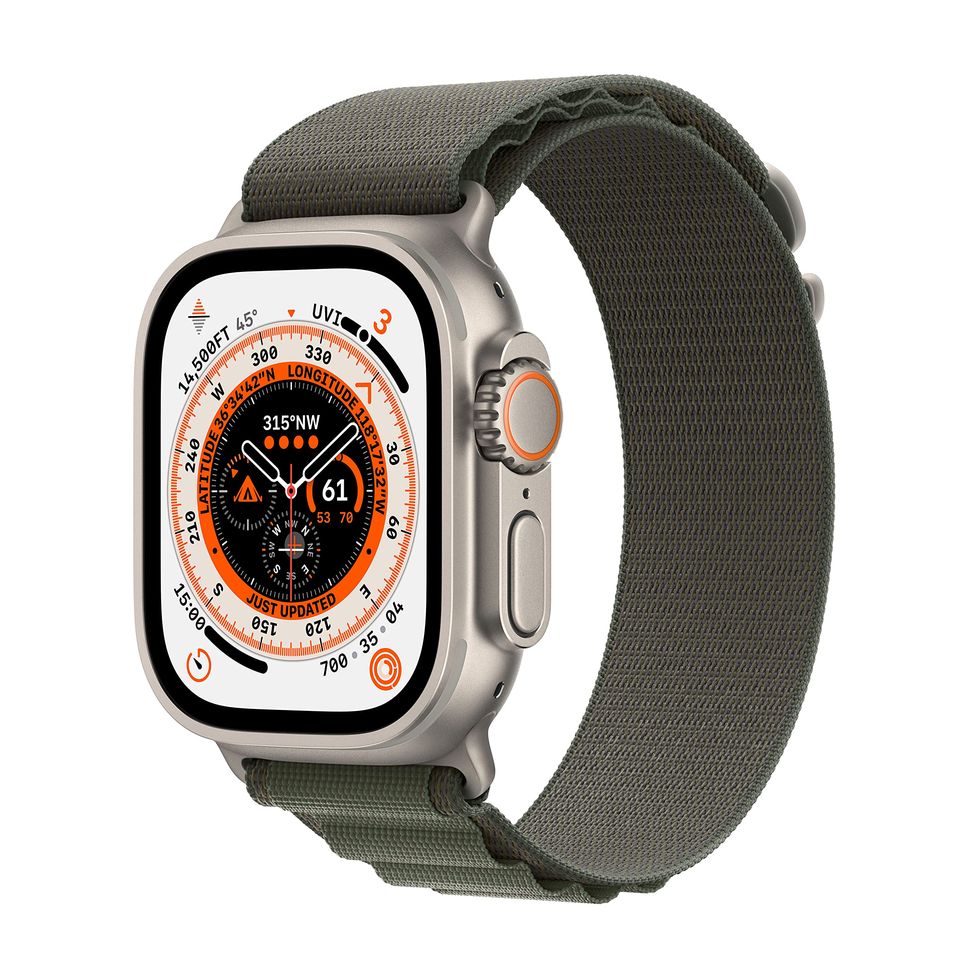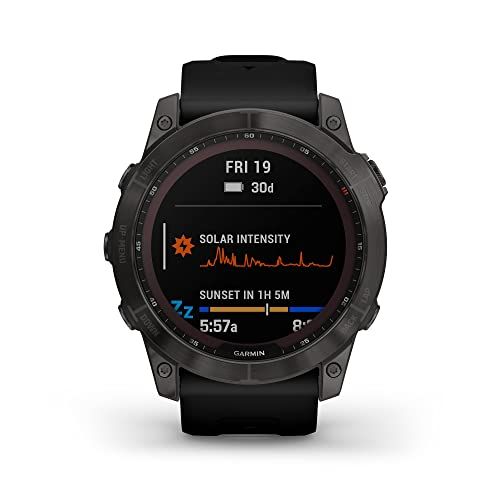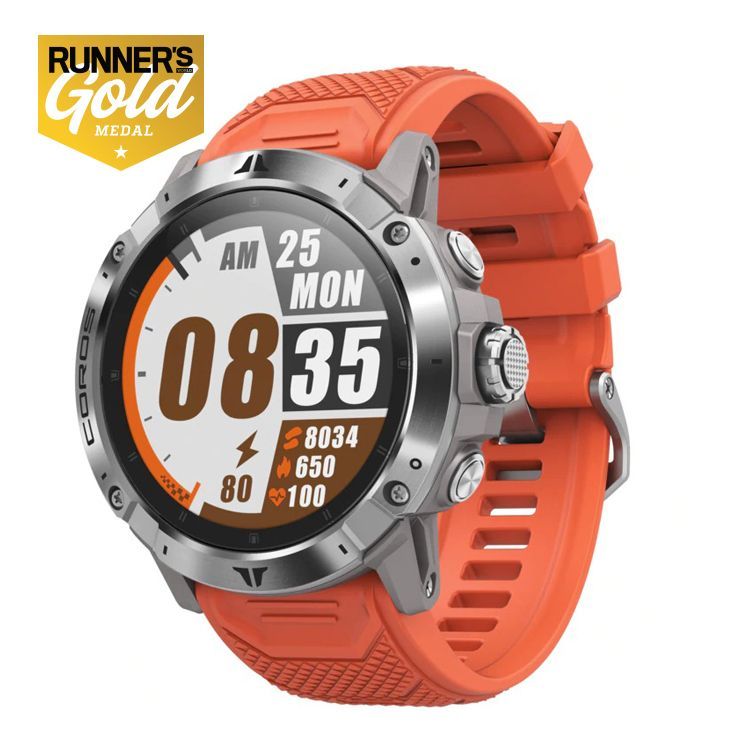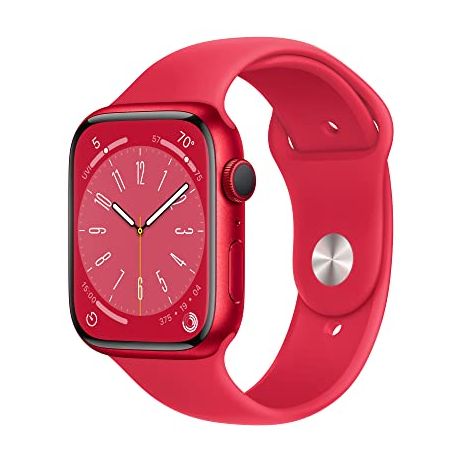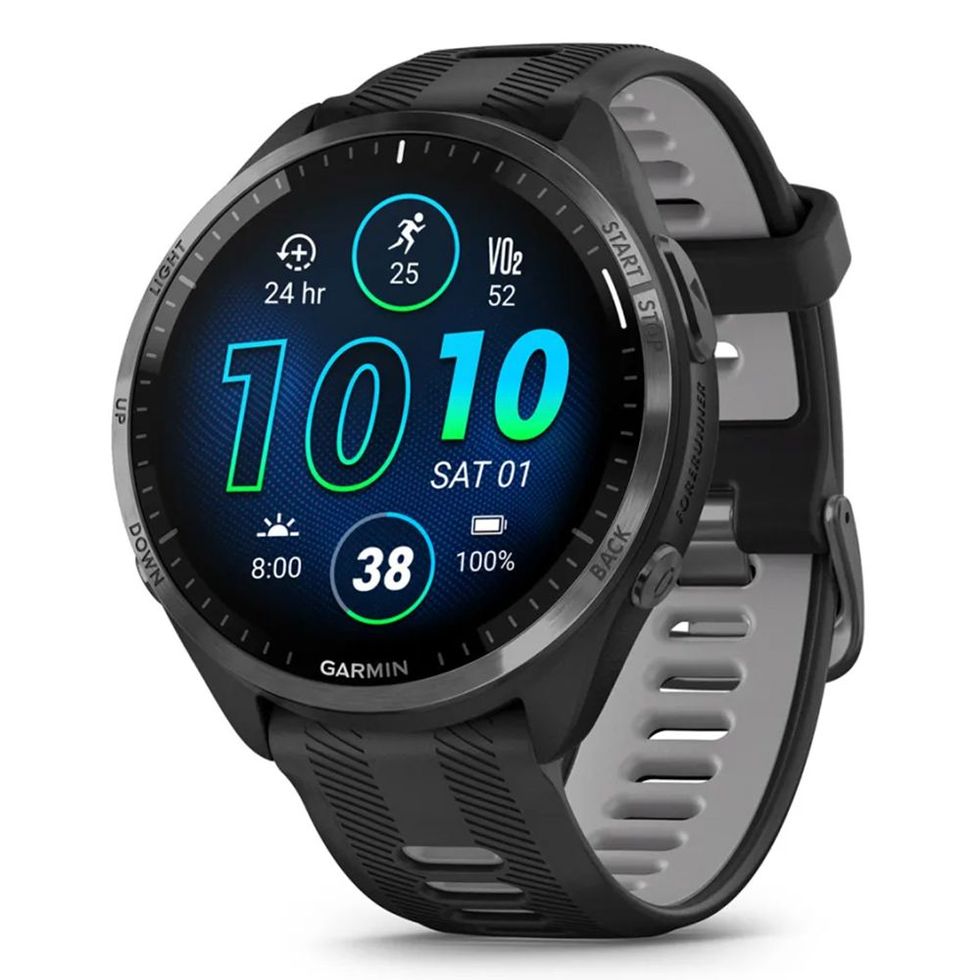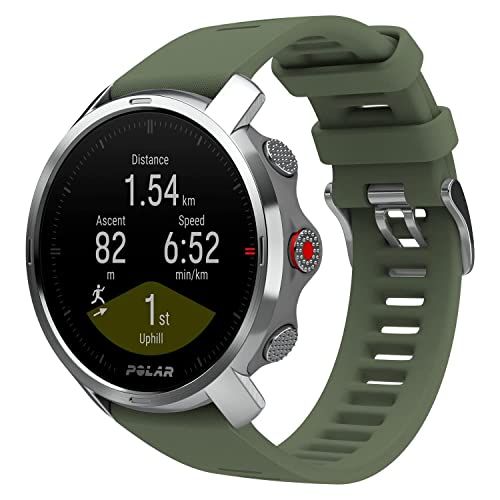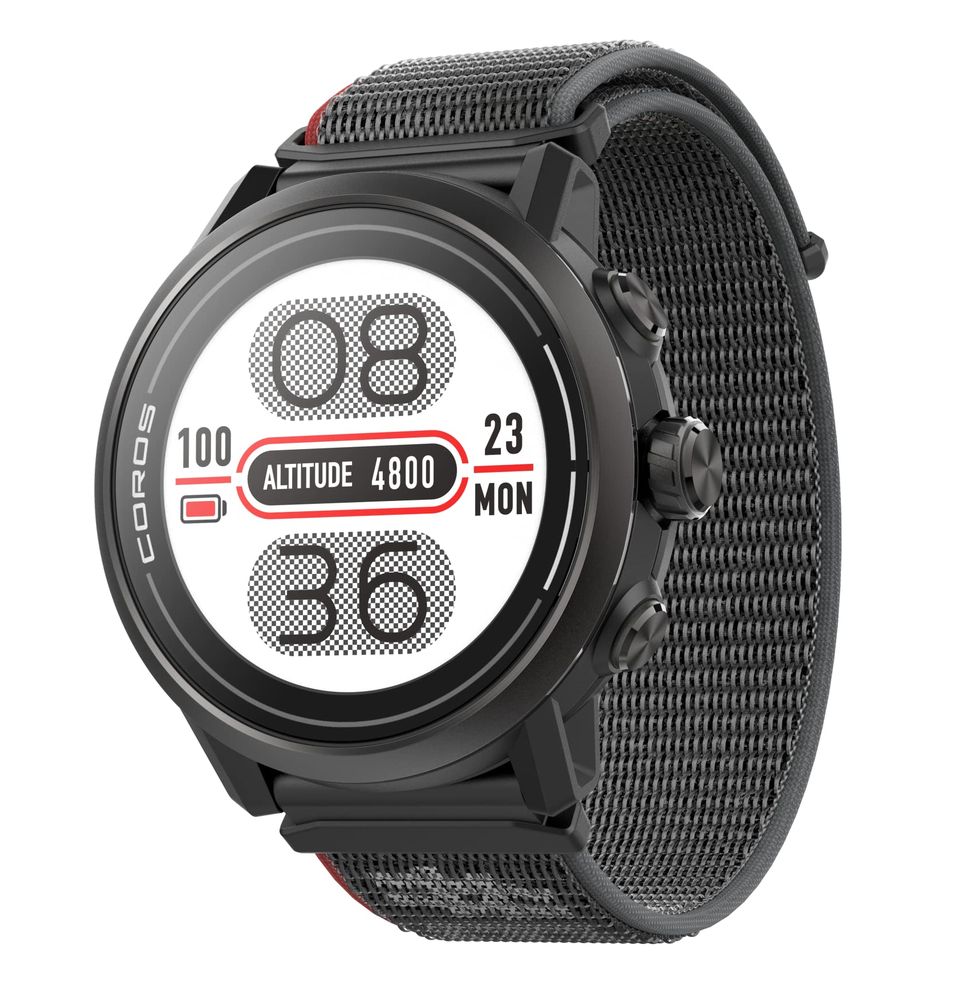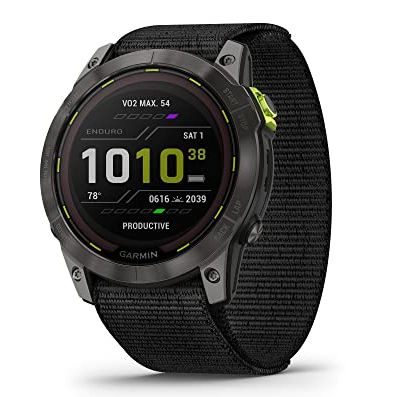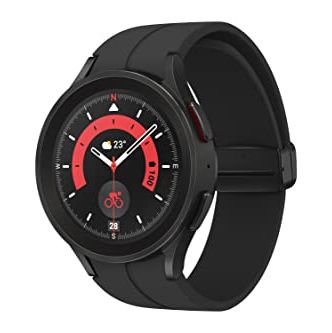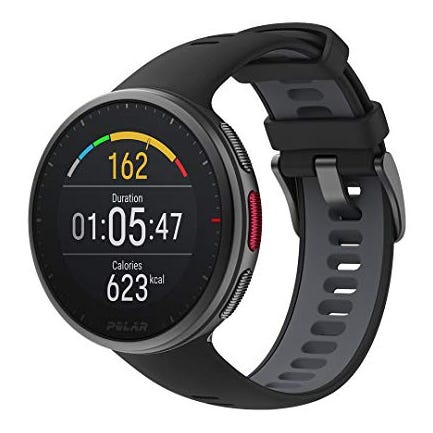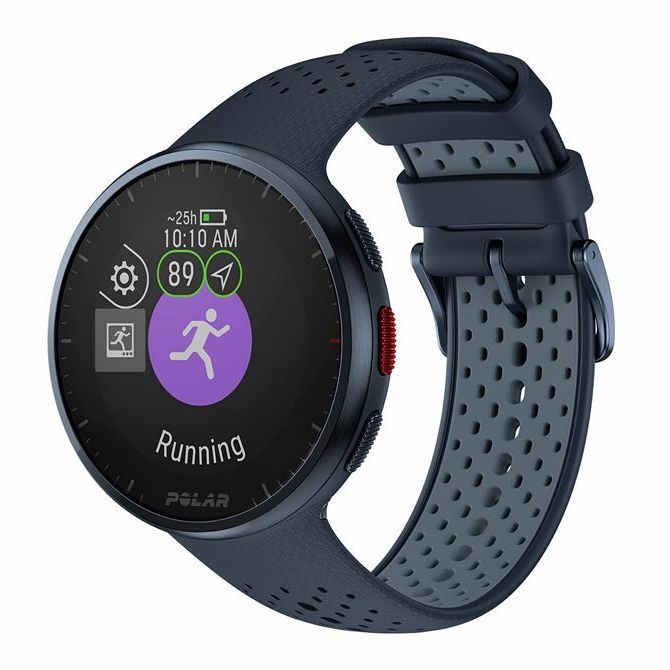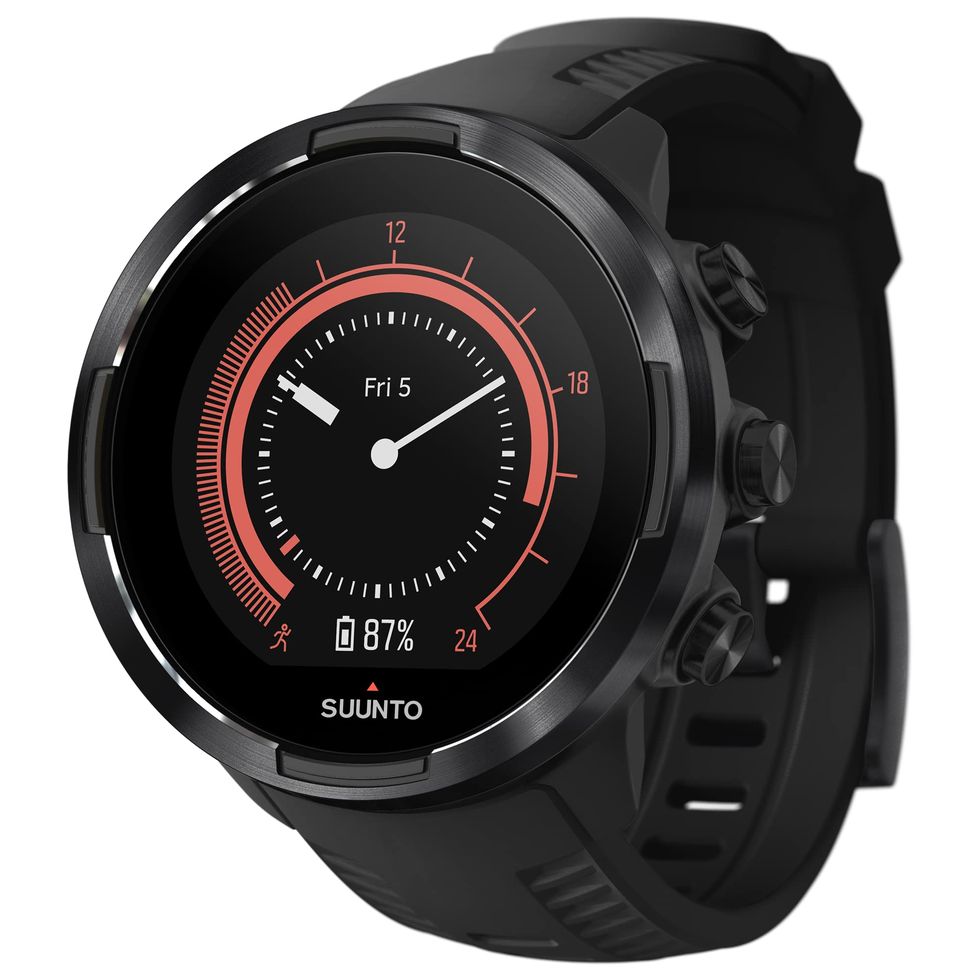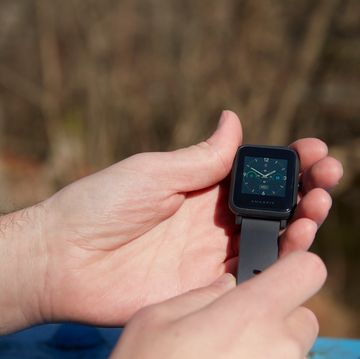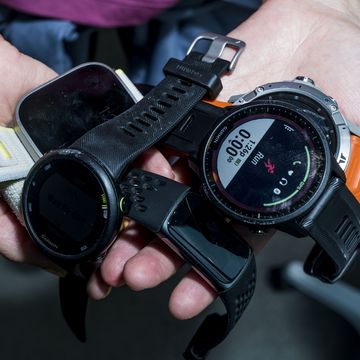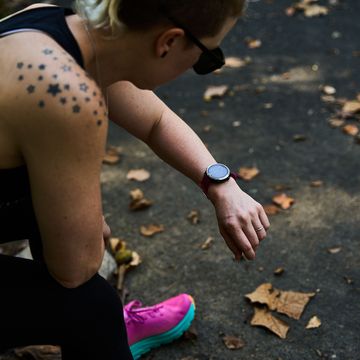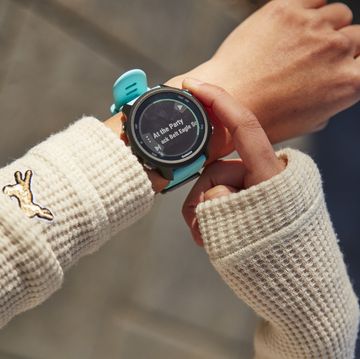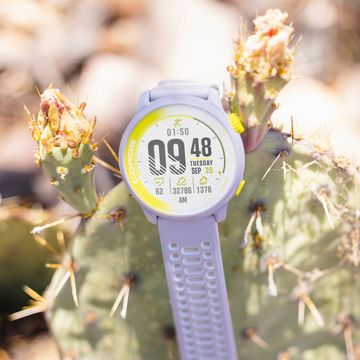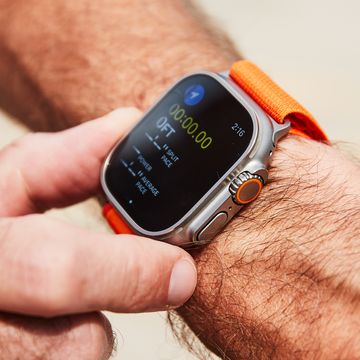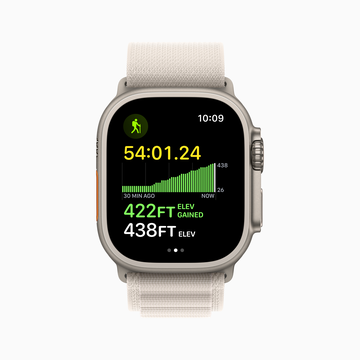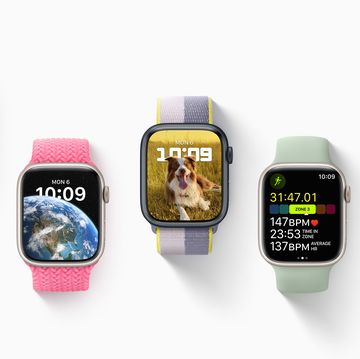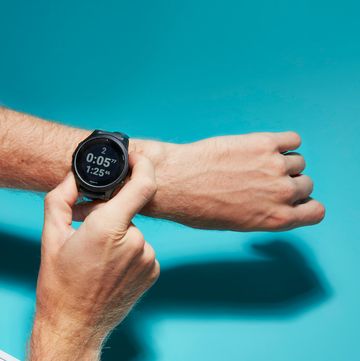Today’s powerful GPS running watches have all the sport-specific features to track every stride on the roads. And, they’re packed with other sensors and technology to keep you connected the rest of the day, too.
A GPS running watch can be a pretty sizable investment that you’ll want to last for years and miles to come, so it’s important to choose the right one for you. Whether this is your first time buying an advanced watch, or you’re poking around for an updated model, we have some tips and suggestions for making sure the right one lands on your wrist. Check out five top recommendations below, then read on for longer reviews and buying advice.
- Best for Marathon Training: Garmin Forerunner 265
- Best Update: Garmin Forerunner 255 Music
- Best Smartwatch: Apple Watch Ultra
- Best for Solar Charging: Garmin Fenix 7X Sapphire Solar
- Best Route Navigation: Coros Vertix 2
Made for Running... and So Much More
In most cases, more features mean more dollars when you’re shopping for a new GPS watch. While there are ways to cut down on price—like buying a refurbished version or opting for an older model of a recently released watch—narrowing down the features you need is key. And that doesn’t just include fitness features. These high-tech timepieces come with a slew of lifestyle functions and perks that you might (or might not) use long after you kick off your running shoes. Here are a few of the hottest features, for both working out and just hanging out, that you’ll want to consider.
Fitness and Lifestyle Features
Altimeters, barometers, and gyroscopes show up in GPS watches geared to hikers and trail runners who want to keep tabs on altitude and air pressure, and navigate new routes in the wilderness. But they do come at a bit of a price bump, so decide where you’ll be doing most of your training. If the answer is on the roads, check out watches with built-in visual maps to guide you through new neighborhoods, or ones that track your in-depth running metrics and design personalized workouts for you. Think you’ll be spending a lot of time cross-training? Some high-end picks offer more than 90 different sport modes ranging from surfing to snowboarding and biking to badminton. Some watches will even let your friends live track your runs.
GPS watches with cellular service mean you can call and text right from your wrist, and give you access to your favorite smartphone apps. For example, you might order your Starbucks latte on the go, stream music wirelessly through Apple Music, track your Uber ride, switch off your house lights—and then brag all about it on Facebook. Wi-Fi compatibility can also make it easier to sync a full music library, check the weather, or scroll through your e-mail. And no worries if you leave your wallet at home. NFC payment features mean you can pay by holding your watch close to the contactless reader at check-out.
What’s New?
Innovation in GPS running watches had slowed in recent years, but 2022 ushered in one of the biggest improvements—dual frequency GPS. Coros was the first manufacturer to leverage the tech in its Vertix 2, but Garmin quickly followed suit with the Fenix 7 Sapphire range of watches and then added it to the Forerunner 955 and Forerunner 255. And Apple rolled out dual-frequency to its new Apple Watch Ultra, so expect to see this proliferate to more watches quickly. These watches can receive two radio signals from a satellite and, because they’re able to tell if one of those signals happened to bounce off a building or rock wall, it can filter out any inaccurate data points. The result is a far more accurate GPS track of your runs, leading to more realistic distance, better real-time pace readings, and cleaner maps uploaded to Strava.
How We Tested
Our staff of experienced test editors has used each of these GPS running watches for several months. We evaluate the devices based on features, accuracy, battery life, connectivity, and what they’re like to use on our daily runs. Our most-recommended watches satisfied our data tracking needs and delighted us with intuitive user experiences and additional apps and features.
Here are some of the top-of-the-line watches and how they stack up. Looking for something simpler or more affordable? Check out Basic Watches for Runners.
Quick Take: Upgraded AMOLED display and 24/7 training guidance at under half the price of Garmin’s most expensive model
Why We Like It: We’ve long been fans of the 200 series Forerunners because they give runners nearly every darn feature they really need, without any bloat, at a reasonable price. But, true innovation in watches seems to have stagnated a bit and now we’re seeing even the good, cheap watches get shiny new features—and shiny new price tags. The Garmin Forerunner 265 is still a somewhat stripped down version of the pricier Forerunner 965, but now it gets a really bright AMOLED display. Forerunners have typically had a somewhat dim screen that’s great for battery performance. These new displays, however, are bright—think iPhone or Apple Watch. To manage battery, you can choose to disable the “always on” display or adjust the brightness (limited to three levels).
“I keep my display dark, but leave ‘gesture’ on, so the screen will light up when I actually raise my arm to look at it,” says Runner-in-Chief Jeff Dengate. “On runs, I leave the display on all the time—I love that Garmin lets you set different settings for those two scenarios as well as when you’re sleeping.”
Other than the display, the only real new impressive feature is Training Readiness. It’s accessible by scrolling down through the widgets and gives you a score to let you know whether you can take on a hard workout. To do so, it factors in your sleep, recovery time, HRV status, acute load (how much hard work you’ve been doing), sleep history, and stress levels. In short, it knows what’s happening in your life 24 hours a day to tell you when to push and when to back off.
Quick Take: An update to a tried-and-true GPS running watch, the 255 now tracks triathlons and has dual-frequency reception for better accuracy.
Why We Like It: If you’ve been a devoted fan of the Garmin Forerunner 200 series, this is an upgrade worth making. The Forerunner 255 Music now comes in two sizes (41mm and 46mm) as well as versions that play music or don’t. Regardless what flavor you choose, the 255 is still one of the most fully-featured GPS running watches, making it one of the best values. The price has risen $50 this year, but we think it’s a fair price given the 255 supports triathletes for the first time—triathlon mode automatically adjusts your displays to show you the right metrics for your activity, plus tracks transition times.
The biggest new feature, however, is the multi-band reception, which allows the watch to receive two signals from a satellite simultaneously to filter out any inaccurate data points. We find this watch tracks as accurate as any other model available.
Quick Take: Finally, an Apple Watch that can get you through a full 26.2
Why We Like It: “Is the Apple Watch Ultra a Garmin-killer?” Well, probably not, but it represents the tech giant’s most formidable sports watch that can hang with premium adventure trackers from Garmin, Coros, and Polar. The 49mm titanium case is larger than previous Apple Watches and houses a bigger battery that can last up to 36 hours of mixed use—daily activity tracking, smartwatch functions, and a jog. Even when used for long endurance events, it’ll have enough juice to get you through a marathon or Ironman with GPS, heart rate, and wireless streaming music, which the earlier version of the Apple Watch could not do.
Plus, it’s one of a few watches to hit the market this year with dual-frequency GPS, leveraging a second signal from satellites to greatly increase accuracy. A new “Action” button on the side can be customized to quickly launch apps or take splits. This isn’t entirely new—Garmin has long had “hot keys”—but it’s a convenient feature from a smartwatch that was primarily controlled through a touchscreen and makes it much easier to use when you’re running with gloves.
Quick Take: This top-of-the-line watch has highly accurate tracking, a huge battery with solar charging, and mapping.
Why We Like It: The Garmin Fenix 7X Sapphire Solar has always been a rugged, indestructible timepiece for the backcountry that we’ve used for trail running and, well, everyday running as well. The biggest reason is because of the watch’s never-ending battery—it’ll last 89 hours with just GPS active but still go for 16 hours if you’re streaming music. We find that we have to charge it only about once a week with regular use. It also has one of the biggest screens you’ll find on a GPS running watch, one that’s capable of showing you up to seven different metrics on a single display.
The biggest change for this version, however, is the introduction of dual-frequency reception, which Garmin calls “multi-band.” In our testing, we’ve found the resulting maps after our runs completely align with the actual course we ran—no more errant zig-zagging as the watch loses signal. A bonus feature on the 7X model, which seems insignificant until you actually use it, is a flashlight. Whether your headlamp battery expires before you do, or you’re just navigating your dark house on your way to bed, you’ll find it helpful.
Quick Take: Detailed maps and an enormous battery
Why We Like It: Coros distinguishes itself from other watch makers by its nearly endless battery life. Every model seems to last longer than its rivals. The Vertix 2 is no exception, with a battery that will go an astonishing 140 hours (up from 60 hours in the first version of this watch). You can further stretch its life by sampling your geolocation less frequently, and get up to 240 hours of use—realistic only for hikers and multi-day ultrarunners.
But the biggest feature of the Vertix 2 is the use of “dual-frequency” and ability to ping five satellite systems. Modern GPS running watches have gotten remarkably accurate, with very few truly errant track points. But Coros’s use of dual-frequency was a first for running watches. It works by looking at two different radio signals that a satellite sends and then filters out any that may have bounced off a tree or tall building (which leads to an error in where it thinks you are on the globe). The expected result is a track that follows your actual route much more closely than watches without this functionality. In testing, we found our path still wobbled slightly and cut corners, and the final distance was never more than a few hundredths of a mile different from a Garmin Fenix 6X Pro or Enduro. But, in truly tricky situations, like heavy tree cover and cities with skyscrapers, it can help ensure your data is more accurate.
Quick Take: The popular smartwatch gets minor updates but keeps the bigger, easy-to-read display.
Why We Like It: The omnipresent smartwatch got minor updates for version 8. Apple Watch Series 8 now includes a wrist-based temperature sensor that women can use for a “retrospective estimate” of when they ovulated. Apple also has increased crash detection to include automobile collisions, monitoring for side-impact, rear-end, and rollover crashes. It keeps the larger display (one-millimeter bigger than Series 6). That, combined with thinner borders and a rounded edge, makes it easy to read data when on the move—for example, the tiny time of day in the top-right corner when the Workouts app is running. The glass is Apple’s most crack-resistant front crystal.
The watch still comes in two sizes—41mm and 45mm. And it still includes fall detection and ECG, features that have been around a couple of years now. Runners in particular will like the always-on display, so you don’t have to exaggeratedly lift your arm to peek at your pace. That was introduced on Series 5, though indoor performance was made even brighter with Series 7.
Morning runners will like that the watch charges quickly—from zero to 80 percent in just 45 minutes. Plus you can extend battery life by turning on low power mode to get up to 36 hours. In the past, you’d have to place the Apple Watch on its charger on a bedside table overnight.
Plus, Series 8 gets all of the new watchOS 9 features that were previously announced, including running power, triathlon mode, and advanced running metrics like stride length, ground contact time, and vertical oscillation.
Quick Take: Offers every training tool a runner or triathlete could want
Why We Like It: Garmin updated the Forerunner 955 (both the Solar and non-Solar versions) to be more accurate than ever, thanks to multi-band reception. This allows the watch to receive two signals from a satellite and filter out any that may have bounced or are inaccurate. It leads to better pace estimates on your run and cleaner maps when you upload to your favorite digital training platform. This top-tier GPS functionality carries over unchanged to the new Garmin Forerunner 965.
However, there is no Solar version of the Forerunner 965. If solar charging is a must-have feature for you, you’ll have to grab the earlier Forerunner 955 Solar model. This triathlon-friendly watch has a solar panel built in to the watch face, which can give you an extra seven hours of run time—assuming you’re outside in the sun for three hours a day.
The color maps, also available on the Forerunner 945 and Fenix models, are another handy feature. Displayed on the watch, these maps help you find your way around new cities without getting lost. (In the 965, they’re easier than ever to navigate; Garmin increased both the watch’s screen size and resolution from the 955.) You can even generate round-trip courses on the fly, no computer required.
Quick Take: Brilliantly simple maps in a small package
Why We Like It: Polar finally gets into the rugged, outdoors scene with the Grit X, designed to compete with the Garmin Fenix and Suunto 9. Like those other watches, it has a long-lasting battery, navigation capabilities, and advanced workout tracking features. But, on your wrist, the Grit X is smaller than those other models. The battery will last 40 hours in standard GPS mode (taking a position reading every second), and like the Fenix and 9, you can boost that lifespan by reducing the frequency of its tracking—up to 100 hours if it pings your location every two minutes and all other sensors are disabled. That’s not terribly useful for runners in most cases, but for extreme ultras and multi-day hikes, it’ll get you to the end without an external battery pack.
When navigating, the watch is really designed for trails and off-road. There’s no map with street names, which we miss, but if the goal is to keep you from getting lost, the breadcrumb does that. On courses where we looped back over a trail or road we’d already run, the watch displayed our correct path with a thick green line (white lines indicate where you’ve been, or trails that you’ll cover later). It’s easier to follow than on some other watches that use a single color.
Another handy feature for runners covering extreme terrain is Hill Splitter. This feature automatically detects when you start climbing or descending, and will display how long you’ve been running the hill and how steep it is. If you’re doing a hill workout, it’ll also keep track of how many reps you’ve done.
Quick Take: An elite GPS watch for running and triathlons that has a long battery life and an intermediate price
Why We Like It: Packing precise GPS tracking and lasting battery life into a compact package, the Coros Apex 2 is a top-tier multi-sport watch for beginners and elites alike. The Apex 2 keeps the countless metric combinations found in the Pace 2, the brand’s most affordable sports watch, while integrating some exciting new features that runners will embrace. Notably, battery life is up to 45 hours in regular GPS tracking mode. It also gives you a slew of metrics you can view over five screens during your workout, including data tracking sensors that show your heart rate, body temperature, and pulse.
Quick Take: Long battery life and navigation
Why We Like It: The Garmin Enduro 2 is no-longer a stripped down version of the Fenix for the sake of longer battery life. The newest version of the ultra-endurance watch nearly doubles the battery life of the first Enduro during activity, and lasts for 120 hours in normal GPS mode with optical heart rate active. Video producer Pat Heine-Holmberg used the watch for a month and a half, with GPS tracking on regular training runs and bike commuting to the office, as well as a 15-hour run in the Alps with navigation, and only had to recharge the watch once.
And, it’s easy to fine tune battery performance to your adventures, if you need even longer run time, and the menu makes it easy to know how many hours you’ll gain or lose by turning different sensors on and off. Daily-use features like Garmin Pay, music apps, and a touch screen, really make it a tool of convenience on the go. For trail adventures and ultra racing, the Enduro 2 now has access to more satellite systems (and multi-band GPS, like the 255 above), topo maps for navigation, and even a decent flashlight that is bright enough to use as an emergency backup if your headlamp fails on the trail.
Quick Take: The best smartwatch for Android users
Why We Like It: Do you use an Android phone? Then the Samsung Galaxy 5 Pro is the smartwatch you want to take running. The 5 Pro has a titanium case and sapphire crystal face that makes it extra durable for sports, plus a larger, 45mm face that makes running data easier to see at a quick clip, and a 590 mAh battery that can go up to 20 hours with GPS on. Give it an eight-minute charge before bed and it’ll track your entire night’s sleep, or put it on the cradle for 30 minutes to fill the battery halfway.
We like the advanced running metrics that the watch is recording directly from your wrist. “On the go, you can see your running asymmetry—I exaggeratedly bounded on my left foot to get a warning that I was unbalanced,” Dengate said. “After my run, a summary screen gave me better detail on stride metrics like my ground contact time, flight time, vertical oscillation, and regularity—fatigue at the end of a run, for example—by showing me orange (improve), green (good), or blue (great) dots.”
We also like that it lets you follow routes—a feature we use regularly on Garmin Fenix and Coros Vertix watches—or can “track route,” which is a breadcrumb trail you can follow back toward your starting point should you take a wrong turn.
As for accuracy, it’s relatively close but not in the same league as the newest GPS running watches that have dual-frequency GPS. “The Samsung Health app does a lot of smoothing to your mapped route when you view it after a run, but if you upload your run to sites like Strava you’ll see a line with a lot of jitter—though I did not experience any extremely wayward points,” Dengate added.
An LTE version will cost you an extra $50 and, like the Apple Watch, will allow you to make calls and send texts even when you’re not carrying your phone.
Quick Take: Lightweight, powerful watch with advanced training tools built in
Why We Like It: The Polar Vantage V2 has been revamped, and is no longer part of the confusing two-watch (V and M) series. Instead, it’s a pricey, powerful watch that takes all of the advanced functions we love in the Grit X, but packs on extra performance testing features geared for serious run training. Now you can get a gauge on your VO2 Max from the watch itself, or get mid-workout fueling reminders so you don’t bonk late in a long run.
We also like the new FitSpark feature, which suggests workouts—strength, cardio, or supportive—to complement your running. “After a four-miler in a snowstorm, the Vantage suggested I do a 23-minute mobility routine to improve my range of motion. A five-minute warmup was followed by one-minute exercises like inchworm, scorpion, hip roll, and calf stretch,” said Dengate. “An animated icon on the overview screen shows how to do each move, and then is replaced by a countdown timer while you’re performing the exercises.”
One knock on the watch is its music functionality. Yes, you can control music from the watch, but that just makes it a remote control for your phone. There is no onboard storage for audio tracks. So you have to tote your phone if you want tunes.
Polar also offers a “Shift Edition” of the Vantage V2, which gives you the ability to swap bands with any 22mm strap. The Shift comes with a perforated leather strap that looks great at the office and a rubberized strap that works better for sweaty runs. From our testing, we’ve found that it’s effortless to switch between the two looks daily.
Quick Take: A mid-tier tracker with advanced training features
Why We Like It: Watches that cost about $300 are the sweet spot these days. For $200, you can get a basic GPS tracker. Or for $700 and up, you can get a premium watch that does mapping and lasts days (or weeks) between charges. But the Polar Pacer Pro is an example of the ’tweener that has an extremely lightweight build yet gets trickle-down features from its pricier siblings. For example, this sleek watch has a barometric altimeter, calculates running power without external sensors, and has functions like performance tests and Strava live segments.
Quick Take: A multi-sport GPS watch that ultrarunners will love because the battery lasts for days at a time
Why We Like It: Everything about the Suunto 9 is big—even the face. But that allows it to pack in a massive battery that will outlast any run you can do. Suunto claims a mind-blowing 120 hours with GPS active using the “Ultra” setting, which records your geolocation only every two minutes. Bonus: If the watch senses that your battery is running low, it will give you a reminder to switch to a different power mode so it will last longer.
Quick Take: The most powerful Fitbit for tracking sleep, stress, and recovery
Why We Like It: The Sense is Fitbit’s priciest, most advanced smartwatch. Already jam-packed with health and workout tracking features, its second version adds a new function called “Body Response” to measure continuous electrodermal activity (cEDA). To do it, the Sense 2 uses feedback from multiple wrist-based sensors, which capture biological markers like skin temperature and heart rate variability. When the Sense detects spikes or shifts in readings, it flags them as body responses and alerts you to notice how you are feeling and track your mood. This can help you home in on specific moments to pinpoint stressors and build mindfulness throughout your day.
The Sense 2 also allows you to use your voice to control it—via Google Assistant or Amazon Alexa. That may not sound very exciting, but it’s a lot easier to just tell your watch what to do (like play music) than to hunt through menus while you’re running.
The sleek square-oval design affords plenty of real estate to read splits on the run, though we found the display doesn’t always light up when we raised our wrist, and the touchscreen is somewhat unresponsive to exceptionally sweaty fingers. What makes it stand out from other smartwatches: It offers all those sensors and around-the-clock health monitoring, yet the battery will go six days between charges.
Jeff is Runner-in-Chief for Runner's World, guiding the brand's shoes and gear coverage. A true shoe dog, he's spent more than a decade testing and reviewing shoes. In 2017, he ran in 285 different pairs of shoes, including a streak of 257 days wearing a different model.
Amanda is a test editor at Runner’s World who has run the Boston Marathon every year since 2013; she's a former professional baker with a master’s in gastronomy and she carb-loads on snickerdoodles.
